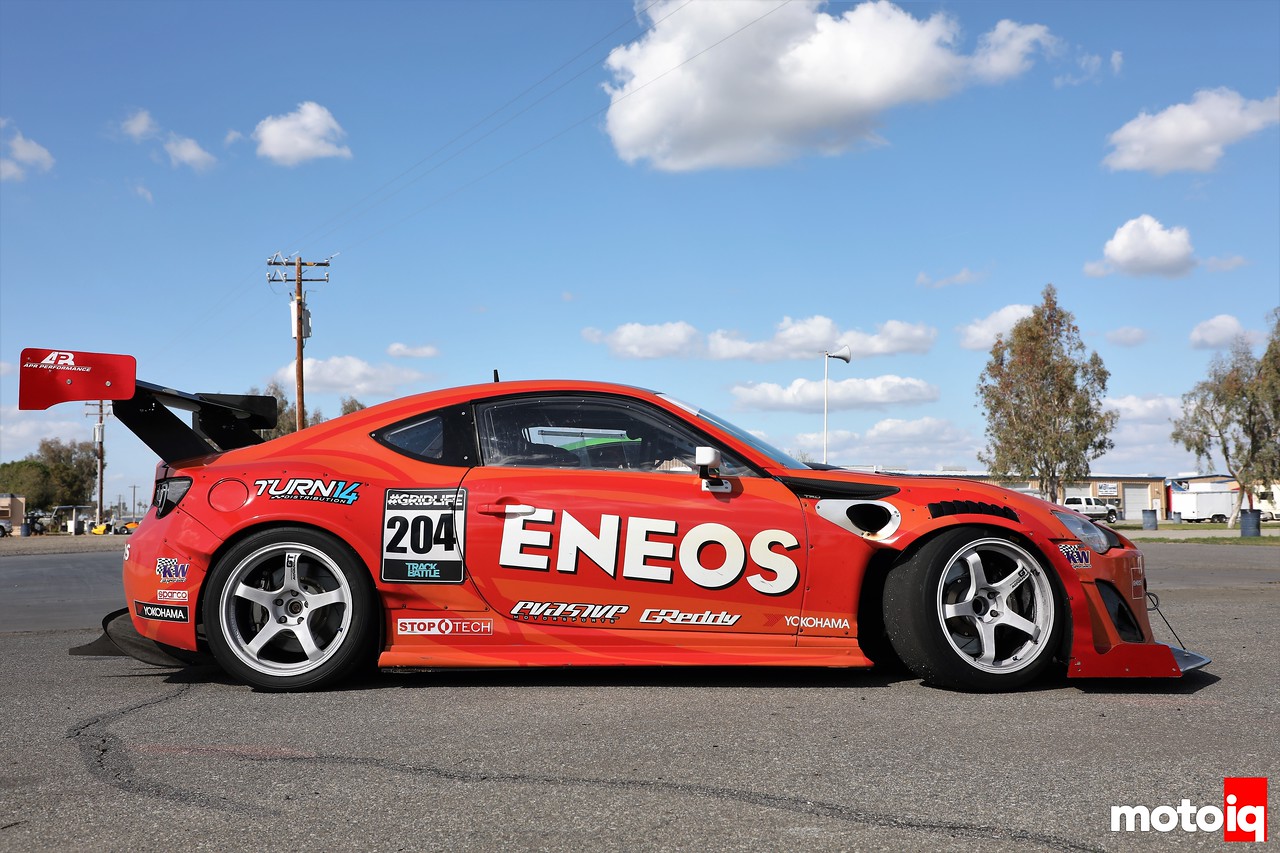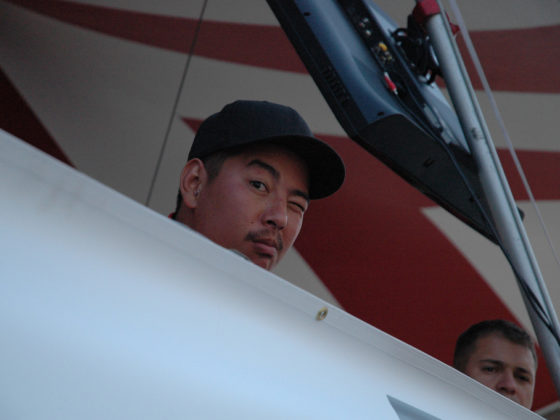
Wisefab’s grip suspension is used on the Evasive 86. In the front, the suspension consists of a CNC machined billet lower control arm and a billet upright. Most of the front lowering of the front end is done in the upright so the stock roll center and bump steer are maintained. The tie rod is mounted in double shear but Evasive reinforced the lower part of the tie rod mount with a steel piece as it was pretty thin. The control arm is mounted on spherical bearings which allow for camber, kingpin inclination, and caster adjustment.

KW 3-Way adjustable Motorsports Dampers are used. The front struts are inverted shaft for maximum stiffness. The shafts ride on linear ball bearings for minimal sticsion. You can barely see it here but the front sway bar is a Whiteline 3-way adjustable part. The endlink attaches to the strut body.

A KW adjustable pillow ball upper mount is used and oriented so its adjustment mostly affects caster.

The remote reservoir for the front shocks is found in the engine compartment so the shock adjustment and the canister pressure is easy to adjust.




8 comments
Great build and write up. One small note is that the vertical strakes on a diffuser limit spanwise flow. Without them, the air will tend to move laterally across the diffuser surface. Obviously, that reduces the effectiveness of the diffuser. Of course, there’s a small drag penalty, but it’s more than made up for in the aero efficiency.
Fun fact: These strakes were first developed for the swept wing jet fighter aircraft. Because the ailerons are generally located near the wingtips (for the maximum moment arm) the control surface on swept wings was losing ability due to boundary layer separation. This was because the swept wing caused the air to turn outward (spanwise flow.) By introducing a wing fence (vertical strake projecting above boundary layer) you limit spanwise flow and the aileron remains effective, so even under extreme yaw angles.
We did it mostly to try to keep the flow attached with a less than optimal angle. We used a pre-made diffuser to expedite stuff. We might redo it later if there is time and money.
Yeah, it’s difficult to know if the flow is staying attached or separating. Obviously, you can’t use wool tufts, because gravity.
Maybe you could make your own ‘flowviz’ paint, but I think that gravity would make that difficult, too.
Not many good options without a wind tunnel. And no reason to spend $$$ unless you know it’s going to work.
Also, the front end should always see the bulk of the aero effort. If the front isn’t working properly, then it won’t matter what you do at the rear. The flow will be turbulent by then, anyway.
Best of luck on Pikes Peak.
page 5 pic 1
it looks like there’s what looks like a delrin bushing on the knuckle between where the tie rod and LCA connect to it. From what I can tell its between 2 rigid non-moving parts… and its not in the pics of the kit on the Wisefab website… whats its purpose?
It’s a steering stop.
oh i see, that makes sense…
I was low key hoping to see a double wishbone conversion similar to what the HKS time attack car did
Not legal for our events!
that makes sense… I didn’t really consider that